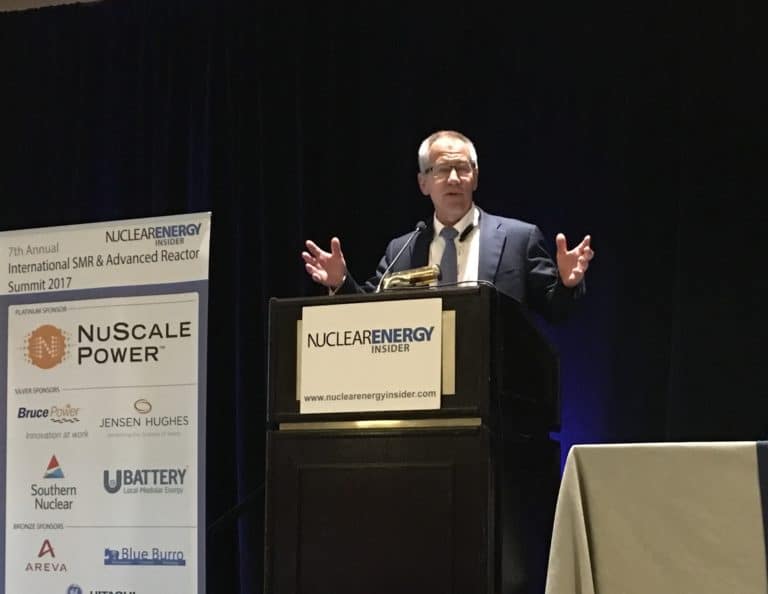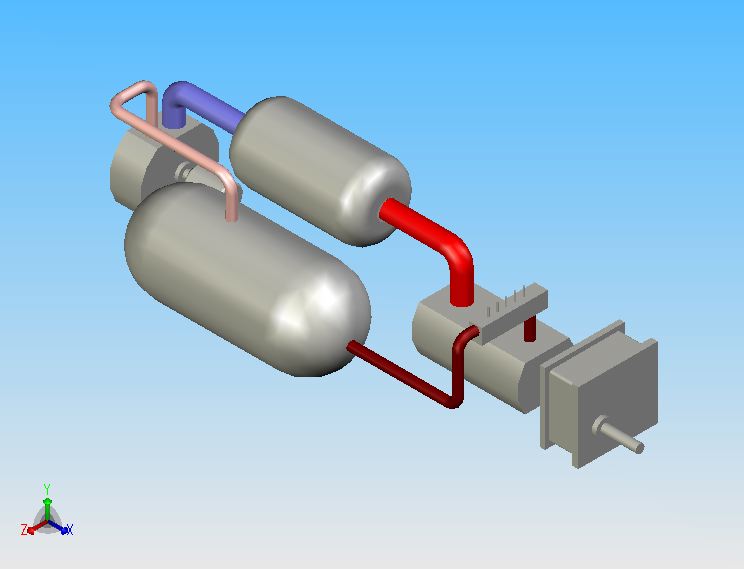One Toshiba Lesson – Organizations With Venerable Corporate Names Can Be Risky Acquisitions
There are numerous reasons why Toshiba, formerly an enormous and successful Japanese electronics manufacturer, is struggling to survive. One of the lessons available to be learned – once again – is caveat emptor (buyer beware). After a series of purchases and deals that gradually took Toshiba a long way from its core competencies, the company is facing large future losses. It is responsible for completing a massive amount of difficult work with little or no upside potential.
It’s tempting to look back and point out why those purchases are turning out to have been of dubious quality and grossly unsuited for the buyer. It would be unfair, however, to simply dismiss the series of actions that led to this point as having been completed by an unwary acquirer. With complex purchases, there are numerous parties to the deal.
Before going too much farther, it would be appropriate for me to confess that much of what I am about to write has been learned or recognized slowly over time. I would have been a poor source of advice at the beginning of the saga. I thought each of the purchases were pretty good at the time they were made. My level of understanding wasn’t any better than that of the people making the deals.
Was Westinghouse Really Westinghouse?
The period between about 2003-2008 – just before the world financial crisis and just before the shale gale – was widely labeled as the Nuclear Renaissance.
Toshiba, which was mainly a highly profitable, but growth-limited electronics manufacturing business, decided that the time was right to convert some of its cash into a larger share of what looked like a big growth opportunity. The company had some experience and assets in the nuclear equipment supplier business and in the large component manufacturing business. It had participated with GE in the building of a number of operating Japanese power plants and with both Hitachi and GE in the design, certification and initial construction projects for the Advanced Boiling Water Reactor (ABWR).
BNFL, a company formerly known as British Nuclear Fuels Limited and fully owned by the U.K. government, was marketing a company called the Westinghouse Electric Company. Though carrying the venerable and deeply respected name of George Westinghouse, the inventor, manufacturer and businessman who founded what turned into one of the greatest industrial enterprises in history, the Westinghouse Electric Company was a only a small sliver of the corporation compared to its peak in the 1970s-1980s.
A June 27, 1998 New York Times article described the company that BNFL owned in an article titled CBS to Sell Westinghouse Nuclear Units for $238 Million and Debts. The article begins with the following two paragraphs.
The CBS Corporation will sell its Westinghouse nuclear and government services operation to a joint venture formed by the Morrison Knudsen Corporation and a British nuclear-fuel processor, the companies said yesterday.
For CBS, which changed its name from the Westinghouse Electric Corporation in December, the sale rids the company of the last vestige of its industrial past.
That company had few of the capabilities that had made it both a household name and a successful supplier of the underlying design used in about 2/3 of the world’s nuclear plants. It no longer manufactured large steam turbines or steam power equipment. It didn’t produce Brayton-cycle gas turbines either. It didn’t even make pumps and valves anymore since the divisions that handled that work also did a large amount of work for the nuclear Navy and could not be sold off to an entity owned by a foreign government.
The Westinghouse that Toshiba purchased was a group of well-compensated, skilled engineers who were quite confident of their abilities to manipulate computer aided design equipment and work their way through regulatory wickets. The company included a large government services arm that was well versed in the competencies required to obtain contracts to service national laboratories and capture matching-funds grants to support a moderate level of advanced reactor design work. There was also a nuclear fuels manufacturing group and a nuclear plant contract services provider.
Near the peak exuberance level of the Nuclear Renaissance – Feb 2006 – BNFL was able to give Westinghouse some excellent curb appeal and convince Toshiba to bid $5.4 billion for a unit that BNFL had purchased for $238 million plus assumption of less than $1 billion in debts just 8 years before. Here are the first two paragraphs of a New York Times piece describing that sale.
LONDON, Feb. 6 – Making a big bet on the future of nuclear power, Toshiba of Japan agreed on Monday to buy Westinghouse Electric, the atomic energy division of British Nuclear Fuels, for $5.4 billion.
The purchase price is about three times the amount analysts estimated in July, because of competition for the unit. Toshiba outbid global giants like Mitsubishi Heavy Industries and General Electric.
Nuclear power is increasingly seen as an alternative to energy sources like coal and oil, as energy demand increases around the world.
For those who may not recall what was happening in early 2006, there was a large wave of interest in building new nuclear plants in the United States. The Energy Policy Act of 2005 not only provided some significant financial incentives for early movers, it sent a loud signal to people who had never lost interest in the clean, reliable, affordable technology that the U.S. government was going to be supportive instead of obstructive.
The language in EPA 2005 directly gave the government “skin in the game” by backing loans and by accepting some financial responsibility for costs that might be imposed as a result of regulatory decisions. That responsibility was limited to $500 million and there wasn’t any specific information on how a project owner would go about proving that the cost was imposed by the government, but the number looked big at the time.
Combined with rapidly increasing prices of alternatives like natural gas and the increasing demonization of coal, utilities expressed their strong interest in nuclear by starting a couple of dozen projects.
In December of 2005, the Nuclear Regulatory Commission had issued a design certification for Westinghouse’s AP1000, indicating to most people that the company had a refined, Generation III nuclear plant design that was complete and ready to sell. It quickly became the leading contender for a number of the projects in the U.S. and attracted substantial attention in overseas markets.
Toshiba executives apparently thought they were buying a winner. They did not fully understand that Westinghouse was a shadow of its former self and that a nuclear plant design that is certified by the Nuclear Regulatory Commission as being safe is not the same thing as a blueprint-level manufacturing and construction design sufficiently detailed to successfully build and assemble a working power plant.
Enter Shaw Group With Its Money And Stone & Webster Subsidiary
The $5.4 billion that Toshiba agreed to pay for Westinghouse was such a generous amount that it was actually beyond the company’s financial capacity. It needed partners to take equity in the project. It initially thought that it would be able to find enough willing partners to purchase 49% of the company, but willing buyers did not line up at the door.
The Shaw Group, a recently assembled conglomerate headquartered in the Southeast U.S., was also enthusiastic about the Nuclear Renaissance. It had purchased the Stone & Webster brand at a bankruptcy auction for the long-established construction company that had famously built most of the MIT campus and had completed a number of reasonably successful nuclear plant projects in the U.S. Shaw had renamed the assorted construction company assets that it had acquired over the years as Stone and Webster.
It’s unclear if any of the skilled tradesmen or project managers that had made Stone and Webster a respected success remained with the subsidiary that the Shaw Group owned. One of the major competencies of the Shaw Group, however, was the financial savvy and fund-raising capabilities of its founder, Jim Bernard. He made a deal with Toshiba to purchase a 20% stake in the company in return for an agreement that his company would be a major supplier and constructor for the first few AP1000 units built in the U.S.
That equity purchase was financed with something close to 100% debt that included a balloon payment. Shaw Group, which was a skilled deal-making enterprise, included a provision in the contract that almost guaranteed that Toshiba would purchase that 20% stake in time to pay off the balloon payment.
The combination of Toshiba, Westinghouse, Stone & Webster (Shaw Group) was seen as credible enough to attract big utility customers, commercial financing, and even a government loan guarantee for two of the reactors. One of the features of the terms and conditions offered to both Southern Company and SCANA was a sovereign guarantee that Toshiba would cover cost overruns past a seemingly distant – at the time – ceiling.
Unfortunately, none of the individual players on any of the teams had actually built anything remotely similar to an AP1000, even though the corporate logos were all very impressive and the deal makers were most likely very polished presenters with fine suits, pressed shirts and carefully knotted silk ties.
In the summer of 2012, Chicago Bridge & Iron (CB&I) purchased the Shaw Group, which had booked more than $6 billion in revenue in the prior years and had a diverse portfolio of component suppliers for the oil and gas business along with its nuclear construction arm.
In Jan 2013, Toshiba exercised its option and purchased the 20% stake in Westinghouse that Shaw Group held.
Soon after CB&I entered the picture, litigation activities increased as the parties involved in the construction project recognized that progress as a percentage of project completion was not being accurately reported.
In October 2015, Westinghouse attempted to settle the conflicts by agreeing to purchase the portion of CB&I that was involved in the nuclear plant construction activities. CB&I’s statement describing the deal sounds almost like a sign of relief in terms of escaping from a difficult situation and pressing the risk onto a different organization.
“This transition is a positive development for all stakeholders in the current nuclear projects as it provides, through Westinghouse, a single focus of responsibility and accountability for the completion of the AP1000 (nuclear reactor) units,” said CB&I President and CEO Philip Asherman in a prepared statement. “For CB&I shareholders, it provides clarity and increased predictability from our growing backlog of work in markets that are more strategic to our future growth.”
There are reports that Westinghouse executives, up through and including Danny Roderick, the CEO, pressed hard to get the deal approved. There is an unnamed whistleblower who claims that their desire to settle the conflicts and move forward came through as undue pressure to ignore some of the looming risks that were being accepted by Toshiba as part of the deal.
Once again, Toshiba accepted larger risks than it knew about as a result of another purchase.





“…a nuclear plant design that is certified by the Nuclear Regulatory Commission as being safe is not the same thing as a blueprint-level manufacturing and construction design sufficiently detailed to successfully build and assemble a working power plant.”
That’s for sure!
If a large LWR is ever built in the US in the next few decades, it will most likely be the Korean APR-1400. They have a working design, construction management experience and the financing.
Still believe the future rides on NuScale.
For Japanese companies defeated in world war II there is no greater achievement than owning one of the American companies that contributed in that defeat. Within that culture there is no greater prestige.
The age of Light Water Reactors has come and gone in the commercial power world. Economies of scale never materialized. Utilities without wise management fell for the pretty pictures and empty promises without looking for the underlying design calculations. Construction was initiated by individuals without the skills and expertise to complete it.
Rod,
I like this report better than the last one I read. I’m still thinking of sending you some additional input re Danny Roderick. Thanks for this article.
This is very enlightening as a former contract employee of Westinghouse Nuclear PCI and the Shaw group that was trying to get certified as builder of the AP1000 framework out of Lake Charles LA. I only lasted for a few years at PCI due to a mess of management and at Shaw for a few mo the as the same issues arose that management was oblivious to the issues involved and the idiot that I had to work for was a former Okie that had been displaced by the plant closing and was riding on his abilities to suck ass so bad that the department I was in was a joke and now the truth is out that Shaw was incapable of keeping that new plant running on its own without a bailout…
An old adage says, “good, cheap, fast; pick two.” Another says, “if it sounds too good to be true, it probably is.”
Rod says, “… the clean, reliable, affordable technology… ”
He should add, pick one, but as he admits, in many more words, he wears only rose-colored glasses when it comes to nuclear technology. And it shows.
Speaking of MIT, there is another recent example in the news – Transatomic Power. About 2 years ago, Rod’s insights were here: ( atomicinsights.com/transatomic-power-anatomy-next/ )
Now, or actually in late 2015, only a year later. Oops. An error of a factor of, let’s call it around 30 or 40 in predictions. “I said this is obviously incorrect based on basic physics,” said Kord Smith.
( http://www.technologyreview.com/s/603731/nuclear-energy-startup-transatomic-backtracks-on-key-promises/ )
@Pu239
My “insights” on Transatomic was simply a post reporting on the company’s existence and its claims.
The tendency to over promise and under deliver isn’t limited to a start-up company with big aspirations led by a couple of young MIT grads.
Adages are not destiny. Besides, nuclear energy has been demonstrably clean, reliable and affordable from real plants in real operating service for the past 40 years.
Note: Affordable does not mean “cheap”. It does not even mean the lowest price in the market.